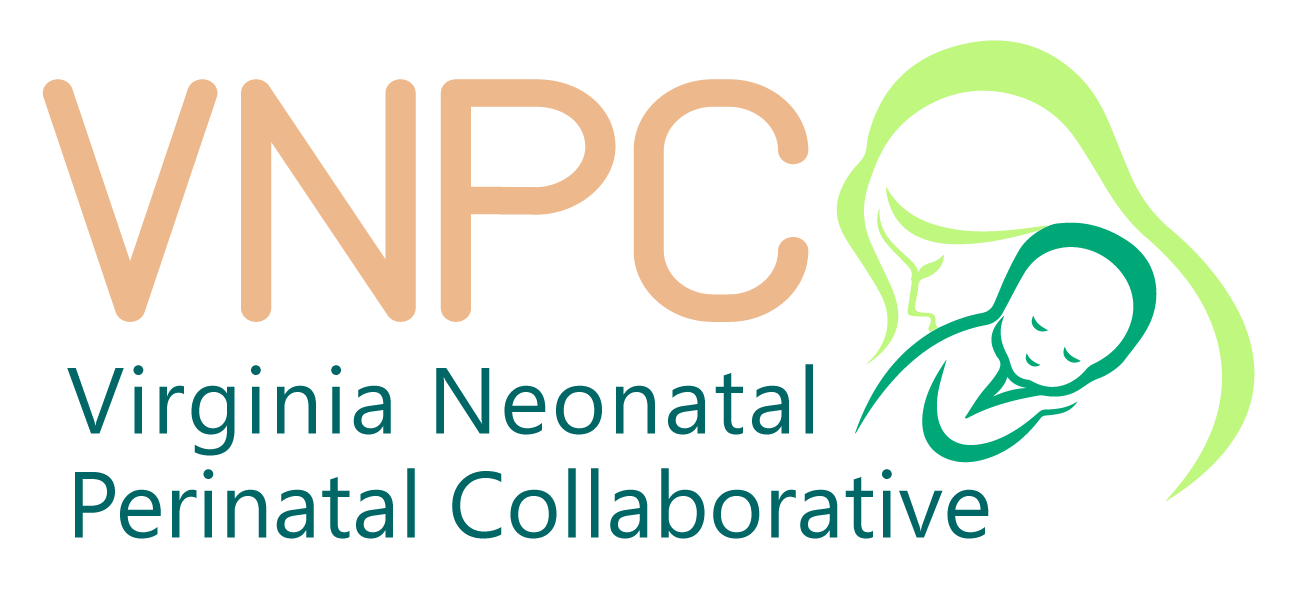One of the Virginia Neonatal Perinatal Collaborative’s (VNPC) priorities is to engage our communities in maternal and infant health improvement work, and likewise support community members and organizations in theirs. The VNPC is committed to making sure our communities have the resources and information needed to ensure that every pregnant woman has the best possible perinatal care and every infant cared for in Virginia has the best possible start to life. One of VNPC’s staff members is a graduate nursing student. In a biostatistics class, she and her project group focused their class final, a meta-analysis, (or systematic review of current literature) on investigating doulas’ impact on birth outcomes in African American women (AAW). In the U.S., AAW are at a 3x higher risk of maternal mortality, (18) have an increased likelihood of cesarean births, (17) and experience greater rates of mistreatment in maternity care when compared to their white counterparts.(11)
Numerous efforts are underway to improve the concerning statistics around AAW birth outcomes; among these efforts is the expansion of Medicaid coverage to include doula services. Virginia was among the first states to enact this initiative; in early 2022, Virginia became the fourth state to begin covering doula care under Medicaid.  Inspired to investigate further how doula care might impact outcomes, the project group’s research question: in African American women, what is the effect of the presence of doulas versus the absence of doulas on birthing outcomes? The group gathered that doula care for AAWs resulted in lower likelihood of epidural use, preterm birth, and low birth weight (4,5,9,14-16). In addition, doula care raised breastfeeding initiation rates and improved AAWs’ feelings of autonomy, emotional support, and respect. (1- 6,8-10,12-16) The effect of doulas on AAW cesarean rates or continued breastfeeding rates could not be concluded. (1,3,5,6,10,12,14-17) However, the group’s presentation went further than bolstering support for use of doulas in maternal health care. The reactions to the presentation itself, which ranged from questions about what doulas do, how they differ from medical professionals, who has access to doulas, etc. served to illuminate gaps in understanding among emerging healthcare professionals about the myriad of birth professionals who should be at the table amidst the U.S.’s maternal health crisis.
Inspired to investigate further how doula care might impact outcomes, the project group’s research question: in African American women, what is the effect of the presence of doulas versus the absence of doulas on birthing outcomes? The group gathered that doula care for AAWs resulted in lower likelihood of epidural use, preterm birth, and low birth weight (4,5,9,14-16). In addition, doula care raised breastfeeding initiation rates and improved AAWs’ feelings of autonomy, emotional support, and respect. (1- 6,8-10,12-16) The effect of doulas on AAW cesarean rates or continued breastfeeding rates could not be concluded. (1,3,5,6,10,12,14-17) However, the group’s presentation went further than bolstering support for use of doulas in maternal health care. The reactions to the presentation itself, which ranged from questions about what doulas do, how they differ from medical professionals, who has access to doulas, etc. served to illuminate gaps in understanding among emerging healthcare professionals about the myriad of birth professionals who should be at the table amidst the U.S.’s maternal health crisis.
Doulas are non-medical birth workers who provide support for women in the prenatal, perinatal, and postpartum periods. They help bridge gaps in education, emotional and physical support, and access to services. Doulas can be community-based, providing culturally appropriate support to women. The promising evidence for doula care is more than welcome at a time when policy makers, healthcare professionals, public health workers and community activists are working tirelessly to improve maternal health. Any potential evidence-based solution for the crisis deserves consideration, especially doula care, which is varied and adaptable to the population and setting. In support of doula care, an evidence review on doula care released by the ASPE Office of Health Policy lists evidence from a meta-analysis of 27 research articles on doula care’s positive impacts on maternal and infant health outcomes and points to the recommendation for continuous doula support during labor as a strategy to improve maternal care management by the Centers for Medicare & Medicaid Services (CMS) Expert Panel on Improving Maternal and Infant Health Outcomes in Medicaid and the Children’s Health Insurance Program (CHIP).(7)
If doula care is so well-supported by evidence and already welcomed by government health agencies, why are doulas not equally as well-utilized?
It was clear from the end of the nursing students’ presentation in class that knowledge of doulas among their classmates is limited. This gap in knowledge is no fault of the students; doulas are not exactly in the common vernacular of individuals outside of the maternal and infant health space. Doulas are a woefully underutilized resource in maternal healthcare. According to the ASPE evidence review, only 6% of U.S. births involve doulas; we can point to potential factors for the underutilization of doulas as including cost, geography, personnel limitations, and lack of awareness of doulas.(7) The expansion of Medicaid services to cover doula care is a step in the right direction, but there is clearly more work to go in ensuring that women who might benefit from doula care have access. Given the promise of doula care as a contributor to the improvement of maternal health in the U.S., it follows that among the most recent maternal health policies include concerted efforts to improve doula awareness, access, and personnel. Now it is a matter of continuing to support our communities by means of building relationships, providing education to fill in knowledge gaps, and fulfilling the goals of maternal health policies.
Special thanks to VNPC staff member Sabrina Munro’s biostatistics final project group members, Ann Cameron Zehmer, Olivia McNulty and Justine Kaskel for allowing the VNPC to share the project findings.
References
- Acquaye, S. N., & Spatz, D. L. (2021). An integrative review: The role of the doula in breastfeeding initiation and duration. The Journal of Perinatal Education, 30(1), 29. https://doi.org/10.1891/J-PE-D-20-00037
- Arteaga, S., Hubbard, E., Arcara, J., Cuentos, A., Armstead, M., Jackson, A., Gomez, A. M., & Marshall, C. (2023). “They’re gonna be there to advocate for me so I’m not by myself”: A qualitative analysis of Black women’s motivations for seeking and experiences with community doula care. Women and Birth: Journal of the Australian College of Midwives, 36(3), 257–263. https://doi.org/10.1016/j.wombi.2022.08.007
- Edwards, R. C., Thullen, M. J., Korfmacher, J., Lantos, J. D., Henson, L. G., & Hans, S. L. (2013). Breastfeeding and complementary food: Randomized trial of community doula home visiting. Pediatrics, 132 Suppl 2, S160-166. https://doi.org/10.1542/peds.2013-1021P
- Falconi, A. M., Bromfield, S. G., Tang, T., Malloy, D., Blanco, D., Disciglio, R. S., & Chi, R. W. (2022). Doula care across the maternity care continuum and impact on maternal health: Evaluation of doula programs across three states using propensity score matching. EClinicalMedicine, 50.
- Hans, S. L., Edwards, R. C., & Zhang, Y. (2018a). Randomized Controlled Trial of Doula-Home-Visiting Services: Impact on Maternal and Infant Health. Maternal and Child Health Journal, 22(Suppl 1), 105–113. https://doi.org/10.1007/s10995018-2537-7
- Holland, D. C. (2023). The Impact of Doulas on Breastfeeding in Black Women: A Literature Review. Kozhimannil, K. B., Attanasio, L. B., Hardeman, R. R., & O’Brien, M. (2013). Doula care supports near-universal breastfeeding initiation among diverse, low-income women. Journal of Midwifery & Women’s Health, 58(4), 378–382. https://doi.org/10.1111/jmwh.12065
- Knocke, K., Chappel, A., Sugar, S., Lew, N. D., & Sommers, B. D. (2022). Doula Care and Maternal Health: An Evidence Review. Retrieved January 25, 2024 from https://aspe.hhs.gov/sites/default/files/documents/dfcd768f1caf6fabf3d281f762e8d068/ASPE-Doula-Issue-Brief-12-13-22.pdf
- Kozhimannil, K. B., Attanasio, L. B., Hardeman, R. R., & O’Brien, M. (2013). Doula care supports near-universal breastfeeding initiation among diverse, low-income women. Journal of Midwifery & Women’s Health, 58(4), 378–382. https://doi.org/10.1111/jmwh.12065
- Mallick, L. M., Thoma, M. E., & Shenassa, E. D. (2022). The role of doulas in respectful care for communities of color and Medicaid recipients. Birth, 49(4), 823–832. https://doi.org/10.1111/birt.12655
- Mottl-Santiago, J., Dukhovny, D., Cabral, H., Rodrigues, D., Spencer, L., Valle, E. A., & Feinberg, E. (2023). Effectiveness of an Enhanced Community Doula Intervention in a Safety Net Setting: A Randomized Controlled Trial. Health Equity, 7(1), 466–476. https://doi.org/10.1089/heq.2022.0200
- Njoku, A., Evans, M., Nimo-Sefah, L., & Bailey, J. (2023). Listen to the Whispers before They Become Screams: Addressing Black Maternal Morbidity and Mortality in the United States. Healthcare, 11(3), 438. https://doi.org/10.3390/healthcare11030438
- Ogunwole, S. M., Bennett, W. L., Williams, A. N., & Bower, K. M. (2020). Community-Based Doulas and COVID-19: Addressing Structural and Institutional Barriers to Maternal Health Equity. Perspectives on Sexual and Reproductive Health, 52(4), 199–204. https://doi.org/10.1363/psrh.12169
- Quintero, S. M., Strassle, P. D., Londoño Tobón, A., Ponce, S., Alhomsi, A., Maldonado, A. I., Ko, J. S., Wilkerson, M. J., & Nápoles, A. M. (2023). Race/ethnicity-specific associations between breastfeeding information source and breastfeeding rates among US women. BMC Public Health, 23(1), 1–12. https://doi.org/ 10.1186/s12889-023-15447-8
- Ramey-Collier, K., Jackson, M., Malloy, A., McMillan, C., Scraders-Pyatt, A., & Wheeler, S. M. (2023). Doula Care: A Review of Outcomes and Impact on Birth Experience. Obstetrical & Gynecological Survey, 78(2), 124–127. https://doi.org/10.1097/OGX.0000000000001103
- Thomas, M.-P., Ammann, G., Onyebeke, C., Gomez, T. K., Lobis, S., Li, W., & Huynh, M. (2023). Birth equity on the front lines: Impact of a community-based doula program in Brooklyn, NY. Birth, 50(1), 138–150. https://doi.org/10.1111/birt.12701
- Thurston, L. A. F., Abrams, D., Dreher, A., Ostrowski, S. R., & Wright, J. C. (2019). Improving birth and breastfeeding outcomes among low resource women in Alabama by including doulas in the interprofessional birth care team. Journal of Interprofessional Education & Practice, 17, 100278.
- March of Dimes. (n.d.). Total cesarean deliveries by maternal race/ethnicity: United States, 2019-2021 Average. Retrieved January 25, 2024, from https://www.marchofdimes.org/peristats/data?reg=99&top=8&stop=356&lev=1&slev=1&obj=1
- Centers for Disease Control. (2023, April 27). Working Together to Reduce Black Maternal Mortality | Health Equity Features | CDC. Accessed January 25, 2024 from https://www.cdc.gov/healthequity/features/maternal-mortality/index.html
